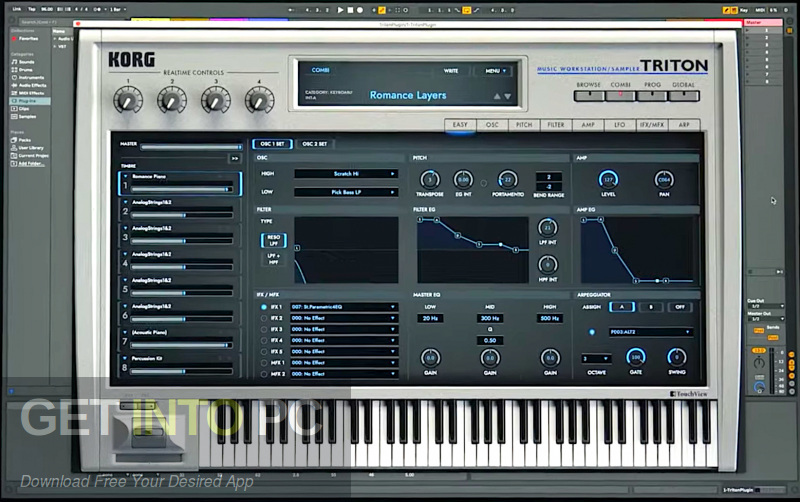Android applications do not require any modifications to run on Chrome OS, but may be modified to better support a mouse and keyboard environment. At its introduction, Chrome OS support was only available for selected Android applications. In October 2015, The Wall Street Journal reported that Chrome OS would be folded into Android so that a single OS would result by 2017. The resulting OS would be Android, but it would be expanded to run on laptops.
Google responded that while the company has "been working on ways to bring together the best of both operating systems, there's no plan to phase out Chrome OS". Google Cloud Print is a Google service that helps any application on any device to print on supported printers. Android applications started to become available for the operating system in 2014, and in 2016, access to Android apps in Google Play's entirety was introduced on supported Chrome OS devices. Support for a Linux terminal and applications, known as Project Crostini, was released to the stable channel in 2018 with Chrome OS 69. This was made possible via a lightweight Linux kernel that runs containers inside a virtual machine. Virtual machines are the heaviest way to do this and you will need a powerful Chromebook to drive the virtual machine software, Windows, and desktop applications.
Newer Chromebooks with modern and fast processors may be able to handle this. Virtual machines will take up a lot of disk space and Chromebooks don't often have, so, not a good combination. Another thing to consider is touch-friendly devices. There are Windows 10 and Chrome OS laptops with touch screens, and both benefit greatly from them, in differing ways. Windows 10 has tablet mode, which removes your taskbar icons and puts all apps in full-screen mode, leaving you with a minimalist workspace that removes a lot of desktop distractions.
And with the new universal apps in the Windows app store, you'll be able to run most of your favorite programs in both desktop and tablet modes. Since 2013, it has been possible to run Linux applications in Chrome OS through the use of Crouton, a third-party set of scripts that allows access to a Linux distribution such as Ubuntu. Chrome Enterprise, launched in 2017, includes Chrome OS, Chrome Browser, Chrome devices and their management capabilities intended for business use. Businesses can access the standard Chrome OS features and unlock advanced features for business with the Chrome Enterprise Upgrade. Standard features include the ability to sync bookmarks and browser extensions across devices, cloud or native printing, multi-layered security, remote desktop, and automatic updates.
Chrome OS has an integrated media player and file manager. It supports Progressive Web Apps and Chrome Apps; these resemble native applications, as well as remote access to the desktop. As more Chrome OS machines have entered the market, the operating system is now seldom evaluated apart from the hardware that runs it.
Begin by plugging in this optimized USB drive containing the Windows installer in your Chromebook. This should automatically power up your device and display the installer on the screen. If that does not happen, turn on the Chromebook yourself and press any key when the option for "Select Boot Option" pops up on your screen. Anyhow, select "Boot Manager" using your keyboard and choose the USB drive you've inserted inside.
There were a few key issues I ran into when installing Windows 10 via Parallels on my Chromebook. The first issue appears to be a Chrome OS integration issue. When I first tried to create the Windows virtual machine on my administrator device, I received an error that the installation could not complete and a Chrome OS update was needed. I checked for updates, but there were no available updates for my device on the stable Chrome OS channel.
The name has since been changed to "Chrome Remote Desktop", and is like "running an application via Remote Desktop Services or by first connecting to a host machine by using RDP or VNC". Initial roll-outs of Chrome OS laptops indicate an interest in enabling users to access virtual desktops. The education sector was an early adopter of Chromebooks, Chrome OS, and cloud-based computing.
Among them are advanced security, because data is not physically on a single machine that can be lost or stolen. Deploying and managing cloud-native devices is easier because no hardware and software upgrades or virus definition updates are needed and patching of OS and software updates are simpler. Simplified and centralized management decreases operational costs. In 2010, Google released the unbranded Cr-48 Chromebook in a pilot program.
The launch date for retail hardware featuring Chrome OS was delayed from late 2010 until the next year. On May 11, 2011, Google announced two Chromebooks from Acer and Samsung at Google I/O. The Samsung model was released on June 15, 2011, but the Acer was delayed until mid-July. In August 2011, Netflix announced official support for Chrome OS through its streaming service, allowing Chromebooks to watch streaming movies and TV shows via Netflix.
At the time, other devices had to use Microsoft Silverlight to play videos from Netflix. Later in that same month, Citrix released a client application for Chrome OS, allowing Chromebooks to access Windows applications and desktops remotely. Dublin City University became the first educational institution in Europe to provide Chromebooks for its students when it announced an agreement with Google in September 2011. It will also need to have at least 2GB of RAM installed, and 200MB of storage space free for the installation, plus any additional room required for the apps you intend to use.
Google created a list of Android supporting models, which is the way Windows apps work on Chromebooks, so check that before beginning any of the steps below. A PC running Windows to create the USB installation media is not optional either. Moreover, the built-in keyboard and mouse of your Chromebook won't work in the installer.
So, you'll also need a USB keyboard and mouse to complete the installation. There are third-party productivity options for Chrome OS, including Zoho and Polaris, but most of those programs require an internet connection as well. Google Drive, however, works offline, and we really like the real-time collaborative editing and number of useful add-ons. Google's project for supporting Linux applications in Chrome OS is called Crostini, named for the Italian bread-based starter, and as a pun on Crouton.
Crostini runs a virtual machine through a virtual machine monitor called crosvm, which uses Linux's built-in KVM virtualization tool. Chrome OS was initially intended for secondary devices like netbooks, not as a user's primary PC. In November 2009 Matthew Papakipos, engineering director for the Chrome OS, claimed that the Chrome OS consumes one-sixtieth as much drive space as Windows 7.
The recovery images Google provides for Chrome OS range between 1 and 3 GB. The next step is optional from a user perspective, but we cannot stress its importance. The system will ask you whether you want to store a backup of the original Chrome OS firmware or not. If you agree to this, insert a USB stick with a good amount of space and press the "Enter" key. When you're prompted that the backup has been stored successfully, remove the USB drive and press the "Enter" key again. You don't have to store the Chrome OS backup on your device; you can copy it and store it on any device you like.
That said, attempting to install Windows will also wipe your Chromebook clean of any data or files that you had previously stored on it. It's best that you back all that up to the cloud or use an external hard drive, for that matter. Finally, this process isn't for every Chromebook out there – it may work for some Chromebooks, and it may not work for others. You can, thus, check out this list to find out if your device can handle the installation of Windows. To see if I could force an update, I then switched my device to the Chrome OS Beta channel. Returning to the crosh command line, I was then able to run the create command and generate a Windows 10 virtual machine.
From there, the installation process went relatively smoothly on the administrator side. Keep in mind that in order to switch to the Beta channel you need to allow permission for this in the Google Admin Console. Even administrators need to enable this permission manually to move to an alternate update channel. After this, you should be able to click on the Parallels Desktop icon in the Chrome launcher and launch the setup process to download and install the zip file on your machine. From this point, Windows 10 should open naturally and you're good to go. Additional users for your organization can repeat this process to use Windows 10 on their Chrome devices.
You're now ready to install Windows on the Chromebook. Plug the USB drive into your Chromebook and power on your Chromebook. It should automatically boot from the USB drive, showing you the Windows installer.
If it doesn't automatically boot from the USB drive, press any key when "Select Boot Option" appears on your screen. You can then select "Boot Manager" and select your USB devices. You'll need a USB keyboard and mouse just to install Windows, because your Chromebook's built-in keyboard and mouse won't work in the installer. And you'll need a PC running Windows to create the USB installation media for your Chromebook. Not all Chromebooks can use it; only Intel-based laptops can take advantage of CrossOver. You'll also need 550MB of storage and at least 2GB of RAM.
Furthermore, not all applications are supported, but many great ones are. You can check out the developer's compatibility page to see if your Windows apps will work. You might also find some benefit in using this software in macOS or Linux, as those platforms are also supported. The spacedesk Video Wall Software Engine enables convenient and inexpensive setup of display walls using a single PC running on regular Windows 10. Our product supports multicast of Windows desktop screen to up to an unlimeted number of remote display devices.
CodeWeavers developed the CrossOver app as a solution to run Windows apps on other operating systems. In recent updates, CrossOver was given the ability to run Windows apps on Chromebook. Remember that the CrossOver Chrome OS version is not yet stable and is still in a beta phase of development. Something else that adds to the depth is the software requirements of employing this route.It can only run on an Intel-based Chromebook. All Android apps or devices will also have to be Android 5.x -compatible. AChromebook is a laptop or tablet running the Chrome OS as its operating system.
Chrome OS is designed by Google and based on the Linux kernel operating system. It is based on free software Chromium OS and uses the Google Chrome web browser as its main user interface. As a result, Chrome OS supports web applications mostly data residing in the cloud rather than on the system itself. Since late 2017, all released Chromebooks can also run Android apps from the PlayStore.
Google Chromebook OS ISO offline installer is a google chrome operating system developed by Google Inc officially for Chromebook. Chrome OS or Chromebook OS is a great OS for power Google users. Very affordable and includes 100GB of Google Drive storage for free . This operating system is fast, lightweight, and easy to use, perfect for getting work done on the go or at home, but not work for gaming. Chrome OS has taken the best parts of an operating system for casual users and put a powerful Google Chrome browser and Google product on top.
At Google I/O 2014, a proof of concept showing Android applications, including Flipboard, running on Chrome OS was presented. Since January 2015, Chrome OS can also integrate additional storage sources into the file manager, relying on installed extensions that use the File System Provider API. Insert the USB drive with Windows into your Chromebook and press the power button. If the Windows installer doesn't boot from the USB device automatically, press Esc as soon as your Chromebook starts up to access the boot menu.
Navigate the menus to find your USB device and select it . Plug your Chromebook into a power source and wait for it to switch to developer mode. Every Chrome OS runs on a native Parallels Desktop that is a full-featured window container. The software allows Chrome users to enjoy the full version of Windows, but there are various vital things to note.
There are system requirements needed to run it successfully on your Chromebook. With the successful installation of this software, IT departments can enable full-software Windows applications, including Microsoft Office, for their Chrome OS devices both online and offline. Ensure you get a Chrome Enterprise upgrade to start running Parallels. The Chrome operating system was reserved only for Chromebook users, but now, it's available for other devices.
It's a great alternative to Windows or Linux, and you can run it without an installation. All you need is to download Chrome OS to a USB drive and use Etcher or some other software to make it bootable. In this article, you will learn how to get Chrome OS working on any computer. This powerful command has the capacity to change your Chromebook's BIOS. Anyhow, after you've entered that command, a list of options will appear before you. Type "3" in the Terminal and press the "Enter" key. You'll have to press "CTRL+D" again here and wait for a moment while the system prepares itself.
It'll go through a couple of screens here, but when it returns to "OS verification is OFF," you'll have to press "CTRL+D" for a second time to enable the developer mode finally. Go through the initial setup and keep a Chrome tab open for the next step. You can't impose a change this big into your Chromebook without assuming the role of a developer – it's just not possible. You have to start by booting your device into "Recovery Mode" by holding down the "ESC + Refresh" keys followed by a prompt press of the "Power" button. Your Chromebook will restart and ask you to insert a recovery USB stick.
This is actually normal behavior, it just isn't quite clear in the documentation that you need an extra step to enable this for administrators. While we can't help you much here, we know where you can get everything. Developer CoolStar has developed a guide for installing Windows on Chromebook devices. Just go to his website by pressing the button below and select your model. This site will provide all necessary drivers and tell you if there are any components that don't work yet.
The biggest issue regarding Windows 10 on Chromebooks, however, is the process of installing Microsoft's platform. Most Chromebooks include a write-protect screw on the motherboard that prevents you from installing any operating system. To get Windows 10 on the machine, you'll need to remove the bottom shell, remove the screw from the motherboard, and then flash new firmware. On ARM Chromebooks, you're a bit limited in what you can do.




























No comments:
Post a Comment
Note: Only a member of this blog may post a comment.